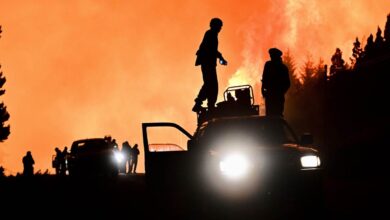Is the Argentine soccer quarry in decline?
The Argentine team has always been characterized by removing a large number of youth jewels. However, what happens the last time? .

The quarry of the Argentine team generates doubts for the future. / Photo: Flickr / LGEPR
LatinAmerican Post | Ariel Cipolla
Listen to this article
Leer en español: ¿Está en decadencia la cantera futbolística argentina?
Argentine soccer was always considered "one of the best" on the planet. For example, the prestigious British publication Four Four Two highlights that Diego Armando Maradona is the “best footballer in history”, a talent that emerged from the Argentinos Juniors club, although his best stage at club level was lived at Napoli.
Even today, the CNN website highlights Lionel Messi as the best soccer player in the world. The problem is that times are running out for everyone, so the Blanquiceleste team must think about a renewal of talents so that, in a few years, they can lead the team.
That's when the problem seems to arise. From The New York Times they warn that Argentina, one of the great football quarries, is on the downside , especially at the local level. Let's see, then, what is the situation of Argentine promises and why it could lose an important place in world consideration.
The soccer promises of Argentina
The 2018 World Cup in Russia was the end of the cycle for many Argentine players. According to what the specialized Pasión Fútbol website highlights, it was the “end of Argentina's golden generation”, after falling in the round of 16 against France. It was a key moment, as a litter of key footballers was forged in Europe.
In other words, we are talking about real stars , such as Mascherano, Agüero, Higuaín or Di María, who did not manage to celebrate a great tournament with their country's shirt, at the same time in which it is difficult for them to reach the competition of the 2022, because, except in the case of Messi or Kun, the rest would not be considered due to advanced age.
Although, for the moment, the Barcelona player continues with the shirt of his country, everything indicates that he will be a leader who will be supported by a much younger team. That is, the rest must accompany you to give you that much-needed renovation. However, to what extent is this new generation of high quality?
The problem is that, as they comment from Del Fuego Noticias, the new generation of Argentine players "no longer seems to seduce the elite of Europe . " For example, some star players, such as Pity Martínez, preferred to go to the United States rather than disembark in the old continent, where they seem to have no place.
Another of the most emblematic cases is that of Martínez Quarta, who is considered by many to be the best central defender in Argentina. Therefore, when its sale was recently announced, the Telam website clarified that it could be a record, since it would be 15.5 million dollars. However, the club he is heading to, Fiorentina, is not one of the biggest on the planet.
Also read: Maradona has died at 60
Even for the strictly juvenile, there seem to be similar problems. In the current market, the Argentine team San Lorenzo de Almagro sold one of the country's leading figures, Adolfo Gaich, to CSKA in Moscow, as reported by Infobae. In other words, a “minor” league within Europe, for a center-forward who is considered the future of the Argentine National Team and who had already made his debut in the senior team.
In addition, there was the complaint that, as happened with many other stars, they did not have too many minutes in their original teams due to a hasty sale. There are even some worse cases. For example, Lionel Messi or Mauro Icardi are the clearest exponents of players who did not even train in Argentina and then the Europeans “took advantage” of them, a trend that continues to replicate.
One of the most recent cases is that of Luka Romero. According to La Nación, the 15-year-old Argentine was the youngest footballer in history to make his debut in the Spanish League. This promise could never play in his homeland, so there is also a structural problem: the lack of attraction to the Argentine League itself.
Of course, there are some exceptions. The clearest is that of Lautaro Martínez, the forward who is having a huge presence at Inter and that leads him to, according to the La Voz website, negotiating a millionaire contract with the entity. Although he is an important player on a world scale, he still seems to be far from what Agüero, Batistuta or Messi supposed at the time, for example.
Thus, it will be crucial to understand the performance in the present and the future of some of the youngest and most important players of the Argentine team , not only to improve the quality of the team, but also to see if they are capable of accompanying Lionel Messi in his last steps to achieve what he could not together with the previous golden generation.




